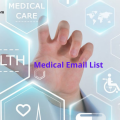Embrace Patient Provider Communication for Better Healthcare

Research evidences state that there's a powerful connection between a healthcare provider’s communicating ability and a patient’s capacity to follow his medical recommendations and adopt preventive health obligations. The physician’s communication skills have a profound impact on the functional and biological health outcomes of the patient. Here, our interests are much beyond just a dialogue between the patient and the provider. The intent is to closely monitor patient’s treatment progress and be available whenever the patient is in need. With the introduction of episode-based care, patients are beneficiaries as they themselves participate in their treatment procedures.
It is just not about the initial communication, there has to be a structural approach to the patient provider communication that ultimately improves healthcare delivery. E-Care is the trend of today and even healthcare has gone digital to an extent where patients and providers do not meet in person, still are so closely connected and the exchange of documents, disease summaries and patient history is done virtually. There are software platforms that bring all – the health-care givers and receivers together and allow them have a dialogue, share documents, and schedule virtual meetings.
DIAGNOSIS
Most of the part of the patient-provider relationship is made during the diagnosis phase, which is the initial most interaction between the two. Diagnostic procedures and decisions are usually made after the history-taking component.
E-Portals have made it possible to send images, reports, and other medicine information that is critical for the physician to know before initiating the therapy. It is a critical phase as it is at this time when the patient starts building trust in the healthcare provider. However, studies revealed that patients are often not allowed to share complete details of their medical history; rather the physicians interrupt the explanation, which leads to diagnostic inaccuracy. Apparently, when patients are interrupted, it hinders the relation at the first step.
ADHERENCE TO TREATMENT PROCEDURES
The extent to which patients conforms to the doctors’ recommendations is called as adherence. Certainly, this is one of the most common practice in healthcare – non-adherence. Some disagree with the clinician’s terms, some worried about the cost, some find the instructions too difficult to follow, and some felt that the prescription is against their personal beliefs.
Episode-based care has eliminated non-adherence to medical procedures as it becomes compulsory for the patient to fill survey forms periodically and assess their own progress. Resultantly, the physician also analyses and suggests better medications and physical exercises that are tracked too. Thus, there is least chance of any negligence or non-adherence to the treatment process.
PATIENT SAFETY & SATISFACTION
Communication among the people involved in either side of the treatment procedures plays an active role in strengthening the relationship leading to a better healthcare service. Any kind of miscommunication may lead to dangerous results on patient care. So, when patient-provider communication is proper, patients are expressive and more participative in the treatment procedures resulting in an overall positive therapy.
Patients want to be better informed about their medical condition, care methodology, and care providers so that they know they are in safe hands and are microscopically observed. With innovative care models, patients are becoming more knowledgeable and satisfied with the care episodes they come across.
Even though there is a lot of technical expertise, communication barrier may ruin the patient-provider communication. Here are certain things to be considered for healthy healthcare deliveries :
• Listen to understand : Most of the times doctors listen to their patients only to respond not to understand. Here, they pre-assume things and start manipulating what is actually said by the patients.
• Take the time to listen : You cannot just rely on the symptoms about the actual medical condition of the patient. You need to ask some things too.
• Minimize the sense of threat : Be fair enough to make patients understand the causes of their illness, be honest to what you feel, acknowledge their emotions, and involve them in certain decisions so that they feel an important part of the treatment procedure.
Healthcare is now measurable with the generation of figures and statistical data of how the treatment has progressed. All those are involved including the care provider and patient need to be active in all the conversations and complete their part of the job in order to get a comprehensive care outcome data.
No two people are same. So, it is important to treat every individual patient with utmost care. It is vital to communicate with every patient with a new perspective; rather by understanding their individual medical condition. It is only when you build the rapport that you will be able to invest in better healthcare.
Life Cycle Health empathizes with this vital criterion within the attention suppliers and patient’s treatment procedures. to understand a lot of regarding our ways that of up patient-provider communication, visit our web site http://www.lifecyclehealth.com. we tend to feel in strengthening bonds at intervals the attention trade.
Read More :
Other articles and publications:
Articles and publications of other companies:
- +1 (415) 877-4640
- 623 Redwood Ave, Corte Madera, Marin, CA 94925
- www.lifecyclehealth.com








